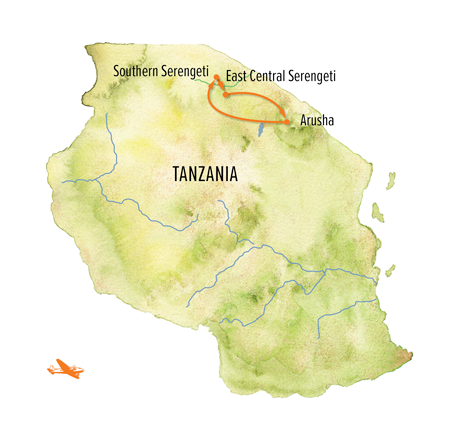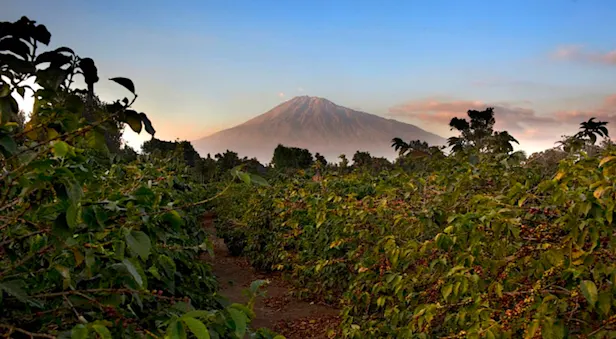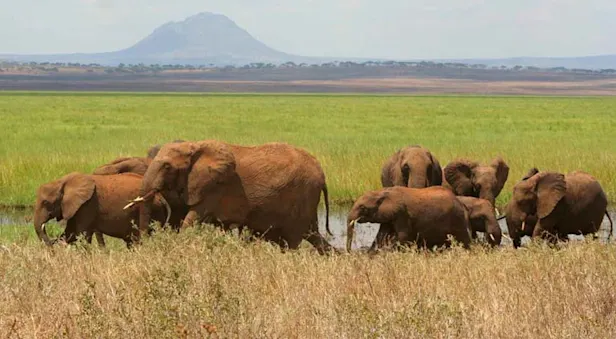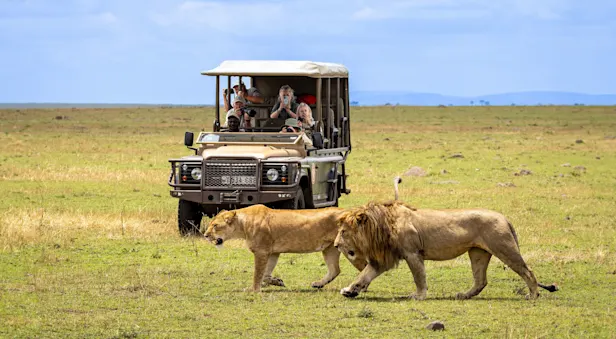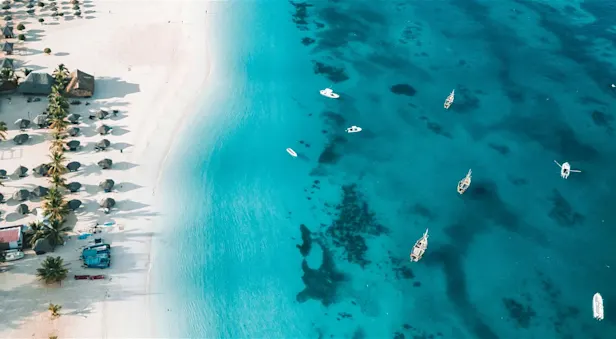December–March Itinerary
On this Tanzania photo safari, your Expedition Leader is a wildlife photography pro who will help you capture iconic images of the Migration and African wildlife. With just four travelers per safari vehicle, everyone gets a "window" seat and extra room for camera gear. Photo safari guests get to carry up to 60 pounds on our chartered flights—a much higher limit than most companies allow.
Arrive at Kilimanjaro Airport and transfer to our lodge in the rolling foothills of Mount Meru. Photograph flowers in the beautifully landscaped gardens that offer a relaxing respite after our long travels or relax by the pool or on your private veranda. This evening, gather for a welcome dinner and orientation from our Expedition Leader, who offers a preview of the incredible photography opportunities ahead.
Cradled between Mount Meru’s towering volcanic cone and Kilimanjaro’s iconic peak, Arusha National Park unveils a diverse landscape brimming with photo opportunities. A rich tapestry of habitats shelter an array of wildlife, including elephants, buffalo, giraffes, zebra, various antelope species and the photogenic Colobus monkeys. More than 400 bird species nest in amid the park’s wetlands, forests and savannas. We spend the entire day here with ample opportunities to capture classic landscapes and wildlife shots from unique vantage points.

Flying on to the southern Serengeti, we reach Nat Hab’s private Migration Camp, our base for a four-day immersion in Africa's Great Migration. In accord with the herds’ seasonal movements, we locate our mobile camp in the southern Serengeti from December through March. This deluxe tented outpost rests within one of the main movement corridors for more than 2 million wildebeest, zebra and gazelle that make this annual trek, plus an accompanying cast of predators. Each year, the herds follow an ancient circuit covering 1,800 miles from Kenya’s Maasai Mara to the southern Serengeti and back again. On daily game drives, witness this remarkable spectacle as the enormous herds traverse the savanna while big cats and hyenas steal behind, following them in open safari vehicles with superb photography access.
The days of heavy canvas hunting camps set for the likes of Roosevelt and Hemingway were nearly over until photo safaris gained popularity in the 1970s, and our secluded camp, with its walk-in canvas tents and crackling campfire, is redolent with that vintage atmosphere. Yet despite our remote location, we enjoy impressive luxuries, including candlelight dinners served under a canopy of stars.

Embark on a full-day game drive across the vast grasslands to our private camp in the Eastern Serengeti. Along the way, we'll pass the iconic Gol Kopjes, rugged rocky outcrops rising from the plains, known as "islands in a sea of grass." From the base of our exclusive bush camp, we take multiple game drives each day. With only four people per vehicle, there's plenty of room for camera gear to take full advantage of photo opportunities.
Surrounded by open range and kopjes—large granite outcrops that dot the plains—our camp offers fabulous wildlife photography in diverse habitats, with top subjects being the abundant feline predators that live and hunt in this area. It also provides exceptional seclusion away from crowds and thrilling game drive encounters.
On the last morning of our photo safari, we make our way to Seronera Airport for our flight to Arusha, arriving at Ngare Sero Lodge at the base of Mount Meru, where a farewell lunch is served on arrival. Day rooms await in this peaceful setting, offering a chance to relax and refresh before your transfer to Kilimanjaro Airport for international departures this evening.
Interested in extending your trip? Link it up with another adventure!
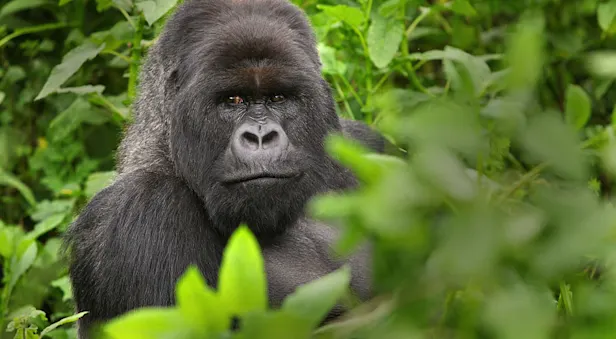
Rwanda Mountain Gorilla Extension
Track endangered mountain gorillas, hike through the rainforest with expert guides and spend rare moments with a habituated family troop.

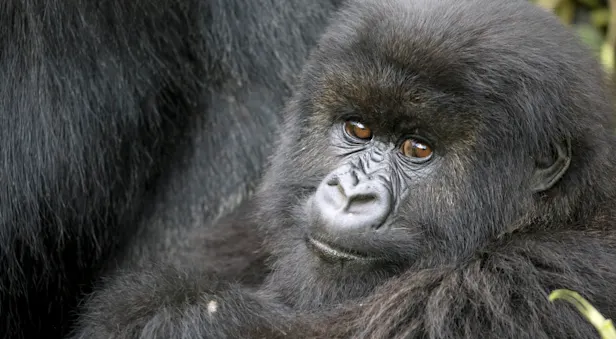
Uganda Mountain Gorilla Extension
On a 5-day safari extension in the rain forests of Uganda, track endangered mountain gorillas on one of the world's most moving and heartwarming wildlife adventures.




















